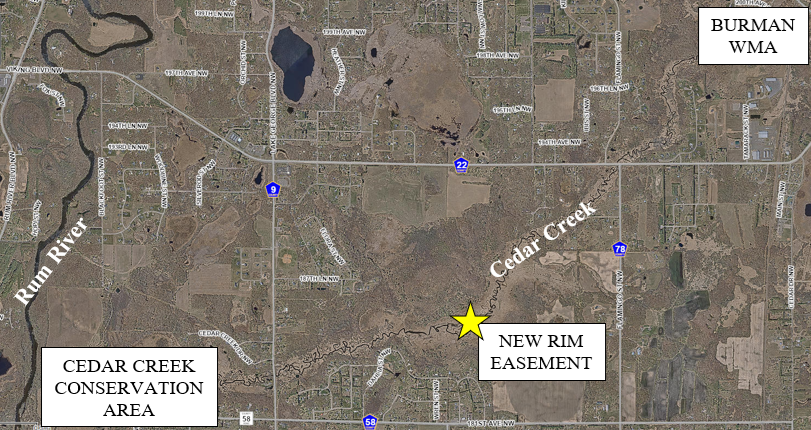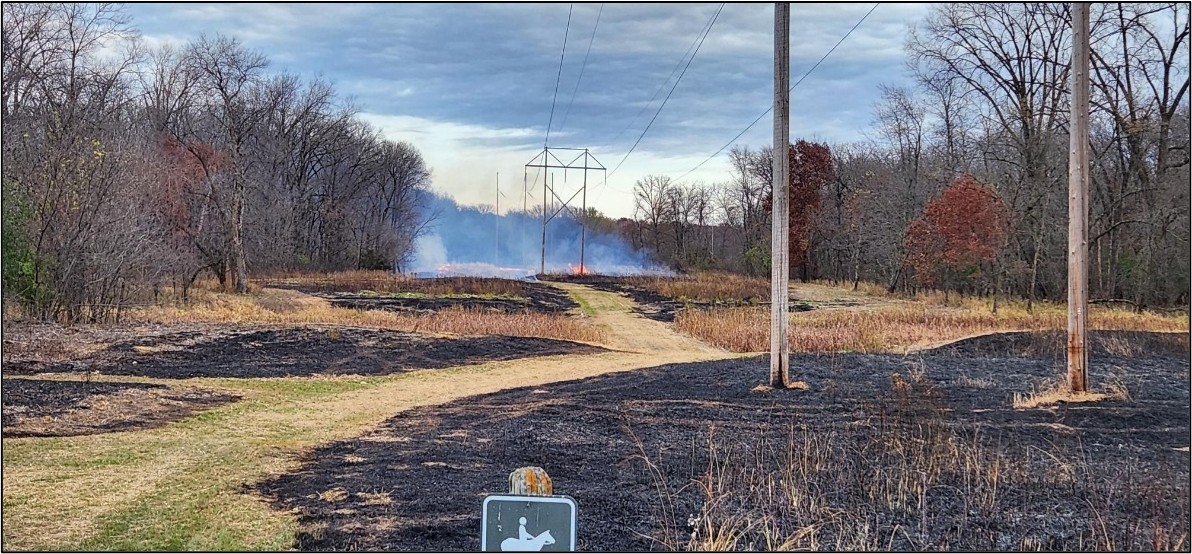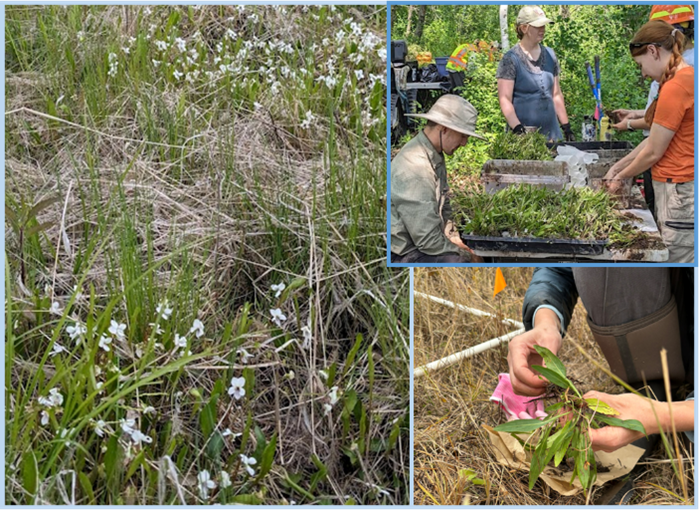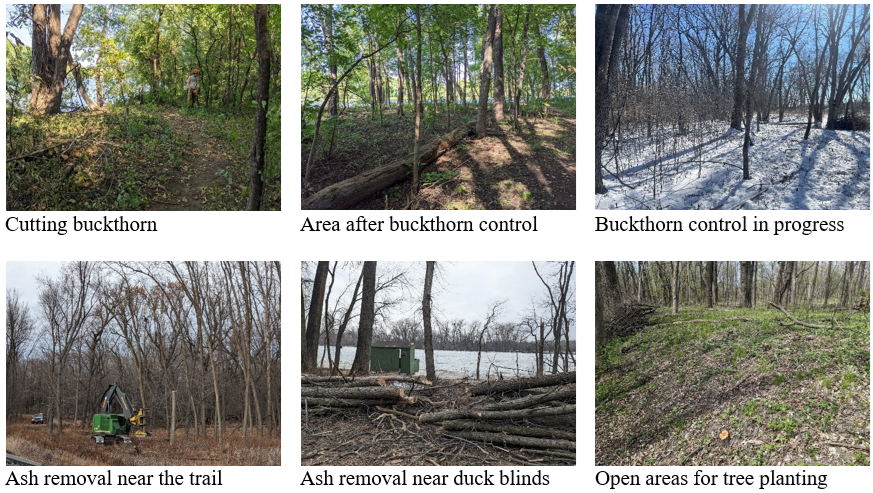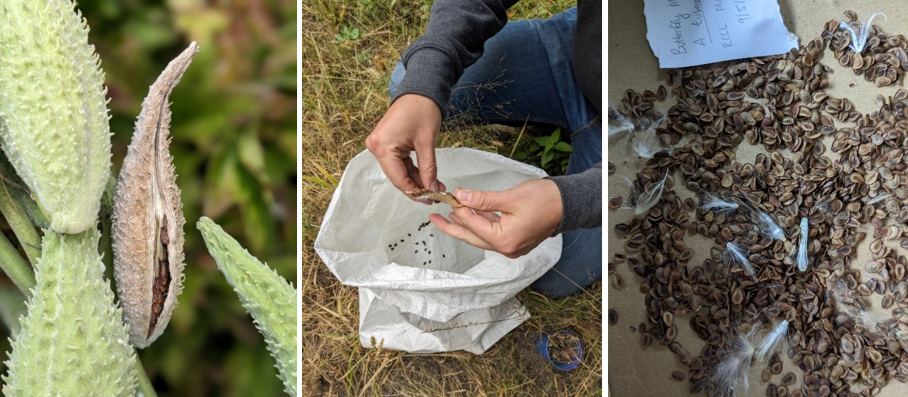The Sloneker family protected 58.5 acres of their land around Cedar Creek through the BWSR's Reinvest in Minnesota (RIM) program. Under the RIM program, the land remains privately owned but is protected by a conservation easement. Land protection along creeks and rivers improves water quality, reduces flood risk, and creates essential wildlife habitat corridors. For more information contact Carrie Taylor, Restoration Ecologist, at
Each year, the Anoka County Parks Department uses prescribed burns to manage ~200 acres of prairie and savanna habitats. Fire is a natural part of these ecosystems; it removes accumulated plant material, releases beneficial nutrients, fights the encroachment of woody plants, and helps control invasive species. Through these processes, fire boosts the native plant community and increases diversity. Prescribed burns are often paired with other management techniques such as mowing, applying selective herbicides, and supplemental seeding.
Powerline corridors like this need to remain clear of woody vegetation, providing an opportunity for active prairie management in its place. This restoration also involved treating smooth brome (an aggressive invasive grass) before burning. Visit the U.S. Forest Service webpage to learn more about prescribed burns or contact Carrie Taylor, Restoration Ecologist, at
Rare Plant Rescue Planting: Help plant rare lance-leaved violets that were rescued from a development in Anoka County. Please RSVP to plant rescued trees at the Beach Conservation District on Wednesday, October 22nd, at 10 am.
If you have questions, contact Carrie Taylor, Restoration Ecologist, at
Kings Island, in the city of Anoka, has a floodplain forest with a canopy mix of silver maple, ash, and elm. Unfortunately, signs of Emerald Ash Borer (EAB) were discovered in 2021, and some trees started falling on the trail along the Mississippi River. ACD received funding from the Outdoor Heritage Fund in 2023 to conduct ecological management at Kings Island. A total of 426 Ash trees were removed in January 2024.
Ash trees infected by EAB will continue to die off, opening up the forest canopy throughout the island. Tree planting is planned for the fall of 2025 to promote diversity and forest habitat regeneration. Climate-resilient and transition tree species will be planted to enhance the ecosystem in Kings Island. Some of these tree species already exist and some were chosen because they are growing well at the Adaptive Silviculture for Climate Change study at Crosby Farm along the Mississippi River.
Join ACD's efforts to diversify and steward King's Island floodplain forest. Sign up to plant trees at Kings Island on Saturday, October 25th, from 10 am to 12 pm.
Do you have native milkweed plants on your property? If so, early fall is a perfect time to collect seeds. Seeds are mature and ready for collection once they have turned a darker brown. Milkweed pods will turn from green to brown, start to open up and reveal the brown seeds inside. Pods will continue to open and the seed will fly out and disperse. However, it's ideal to collect seeds before the pods fully open and the seed fluff/silk has developed. It is best to remove the fluff from the seed for storage. To separate the seed from the fluff, remove the entire stalk of seeds and fluff/silk from the seed pod, hold the end of the fluff/silk and gently push and pull the seeds off the fluff/silk. Watch this short video to see butterfly milkweed seed cleaning. Once the seed is "cleaned" (the fluff is removed), lay it out to dry completely, label the seed with the plant species name (common or butterfly milkweed), and write the date and location the seed was collected. Store dry seed in paper or mesh plastic bags.
ACD collaborates with Anoka County Parks and cities within Anoka County to enhance local native habitats. If you have native milkweed seed you would like to donate, ACD staff will be happy to take it and spread the seed at appropriate locations.
Contact Carrie Taylor, Restoration Ecologist, at
